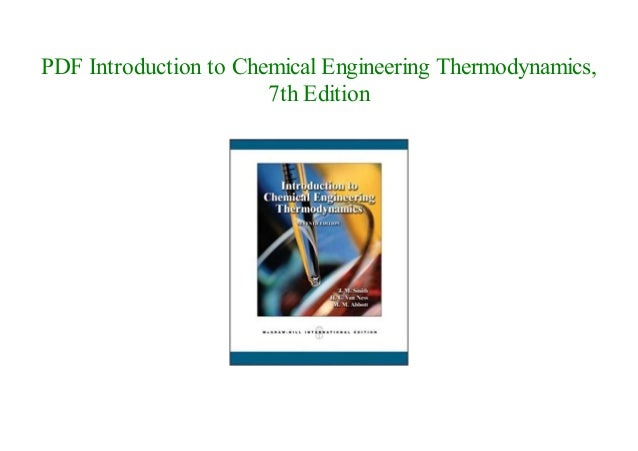
(c) The mass of sugar in this saturated solution at 20☌ (293 K) sugar () m' may also be calculated using Equation 4. It is now possible to calculate the mass of sugar using Equation 4.3 as sugar sugar sugar water (wt%) = 100 m C m m × + sugar sugar 77 wt% = 100 1500 g m m × + Solving for m sugar yields m sugar = 5022 g (b) Again using this same plot, at 20☌ (293 K) the solubility limit (or the concentration of the saturated solution) is about 64 wt% sugar. From the solubility limit curve in Figure 9.1, at 90☌ (363 K) the maximum concentration of sugar in the syrup is about 77 wt%. Chapter 1: Introduction 1.1 Basic Definitions 1-1 1.2 Property 1-2 1.3 Units 1-3 1.4 Pressure 1-4 1.5 Temperature 1-6 1.6 Energy Balance 1-7 Example 1.6-1: Gas in a piston-cylinder system 1-8 Example 1.6-2: Heat Transfer through a tube 1-10 Chapter 2: Thermodynamic Property Relationships 2.

The analysis of thermal systems is achieved through the application of the governing conservation equa- tions, namely Conservation of Mass, Conservation of Energy (1st law of thermodynamics), the 2nd law of thermodynamics and the property relations. What will be the composition of the saturated liquid solution (in wt% sugar) at 20☌? (c) How much of the solid sugar will come out of solution upon cooling to 20☌? Solution (a) We are asked to determine how much sugar will dissolve in 1000 g of water at 90☌ (363 K). Thermodynamics: the study of energy, energy conversion and its relation to matter. (a) How much sugar will dissolve in 1500 g water at 90☌ (363 K)? (b) If the saturated liquid solution in part (a) is cooled to 20☌ (293 K), some of the sugar will precipitate out as a solid.


CHAPTER 9 PHASE DIAGRAMS PROBLEM SOLUTIONS Solubility Limit 9.1 Consider the sugar-water phase diagram of Figure 9.1.


 0 kommentar(er)
0 kommentar(er)
